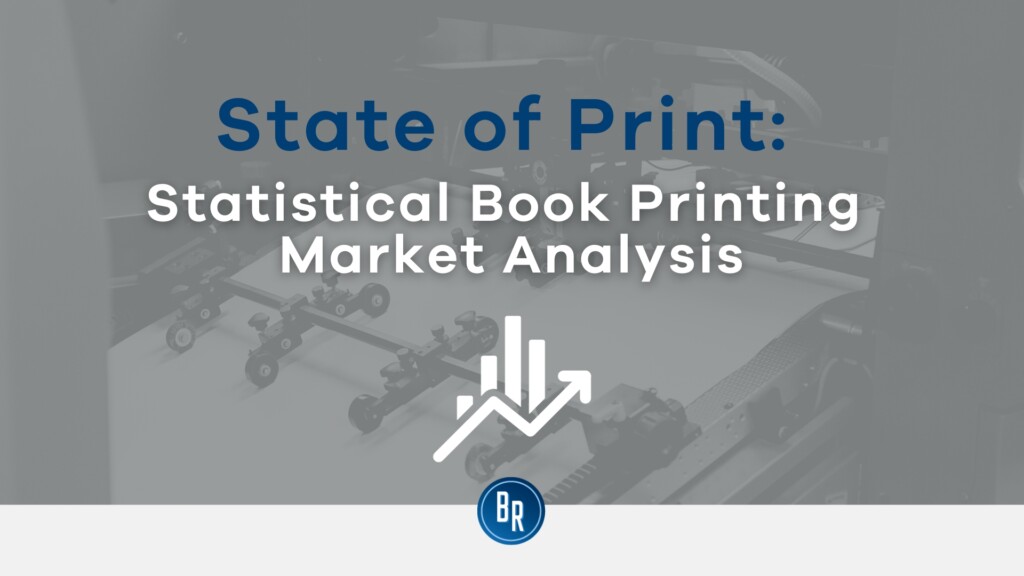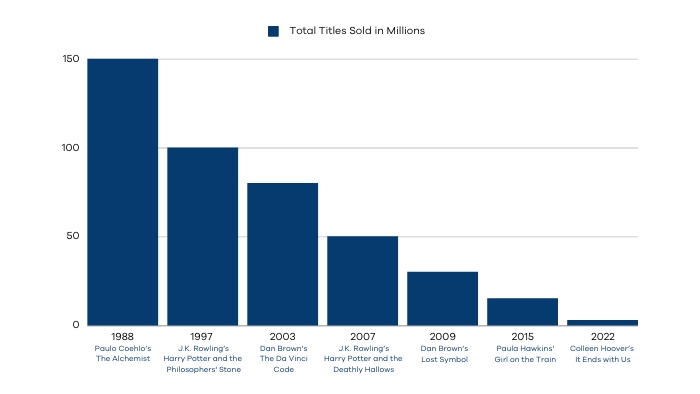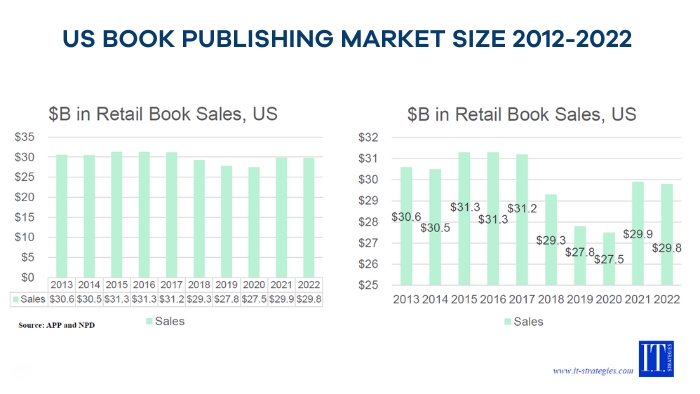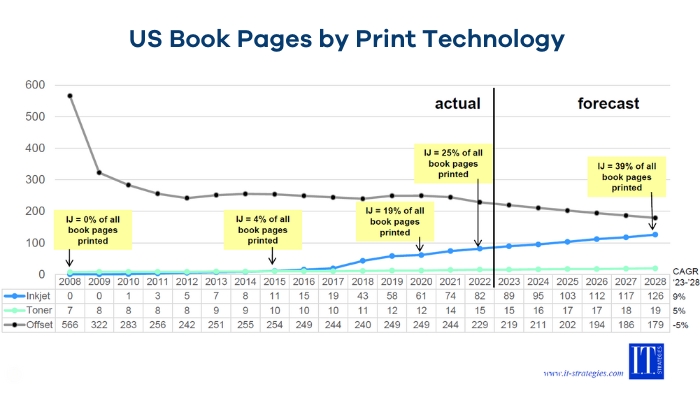State of Print: Statistical Book Printing Market Analysis
At a recent book industry event, Marco Boer from I.T. Strategies, delivered a comprehensive trend analysis of the book printing industry. His analysis provided attendees and our BR Printers team with a deeper understanding of the industry’s current landscape and its potential future directions. In this article, we will delve into the most significant analytical findings and their implications for the printing and publishing industries. We’ll examine key trends, market shifts, and technological advancements shaping the production and consumption of books. Furthermore, we will discuss how these insights are impacting printers, publishers, and authors, offering a comprehensive overview of the dynamic print industry landscape.

The Number of Books Published Annually
Market research indicates a robust and growing number of new titles published each year. Unlike the past, where mega-sellers like “Harry Potter” would sell tens of millions of copies, today’s market is characterized by a broader range of bestsellers with smaller sales totals. For instance, “Harry Potter and the Philosopher’s Stone,” released in 1997, has sold over 100 million copies, while the best-selling book of 2022, “It Ends with Us” by Colleen Hoover, sold 2.75 million copies since its 2016 release. This shift from reading to digital entertainment has significantly influenced book buying and publishing habits, as evidenced by the decrease in mega-seller sales figures.

Do People Still Purchase Books?
Despite the rise of digital media, the retail book industry remains resilient. In 2022, retail book sales in the United States reached $29.8 billion, only slightly lower than the previous year’s $29.9 billion. The demand for physical books remains strong and consistent, with annual sales hovering between $27.5 billion and $31.3 billion from 2013 to 2022. The peak years were 2015 and 2016, while 2020 saw the lowest figures. From the adoption of eBooks to the strength of the economy, many factors can be credited for the high retail book sales from 2015-2017 but there isn’t one clear reason. This decade-long stability in book sales confirms that people are still avidly buying and reading books. While there have been no significant declines in sales revenue, other statistics, such as unit sales, suggest potential shifts.

How Many Books Were Sold in 2022?
Unit sales of print books between 2021 and 2022 in the United States provide valuable insights. According to NPD Bookscan, there were 843,121,000 books sold in 2021, which slightly decreased to 788,687,000 in 2022, marking a 6.5% decline. Notably, adult fiction was the only category to exhibit positive market growth, with sales climbing from 173,065,000 in 2021 to 187,821,000 in 2022. This positive trend within an overall decline may indicate a shift in consumer preferences towards adult fiction.
The Volume of Book Pages Printed Annually
The number of book pages printed is equally noteworthy. In 2022, market research revealed that approximately 326 billion book pages were printed. Notably, the number of pages printed on digital inkjet printers has surged by an impressive 925% since 2014, challenging the traditional dominance of offset presses. Printers and publishers are still producing a lot of books, but print runs per title are declining. The most logical solution for this market shift is to print on inkjet presses. These shifts have led experts to predict a gradual transition in production leadership from offset to inkjet in the future.

What Does This Mean for Manufacturers?
The most significant shift for book publishers to consider is the rise of digital printing, attributed to its cost-effectiveness. Publishers looking to reduce print costs must evaluate areas where they can cut expenses, improve production times, and invest in efficient and automated equipment to keep production within the United States.
What Does This Mean for Publishers?
Consumer preferences are evolving, with a surge in new titles entering the market. This heightened competition necessitates effective marketing and promotion strategies to ensure a book stands out among the multitude of options available. Despite the rise of digital media, the retail book industry’s stability, with $29.8 billion in sales in 2022, suggests that publishers can continue investing in traditional print book publishing. Publishers should also stay updated on technological advancements to optimize their production processes.
What Does This Mean for Readers?
For avid readers who enjoy the tactile experience of holding a physical book, there’s good news: print is here to stay. The robust retail sales of $29.8 billion in 2022 indicate a strong demand for physical books. With a staggering four million new titles hitting the shelves in the United States in a single year, readers have an abundance of choices. Whether you prefer physical books or digital formats, the world of literature is thriving and evolving to cater to your diverse tastes.
Staying Ahead of the Curve
As the book market in the United States continues to evolve, understanding its dynamics is crucial for players in the print and publishing industry. This trend analysis highlights the resilience of the book market, dispelling notions of decline. While challenges exist in a saturated market, opportunities abound for those who adapt to changing consumer preferences and emerging technologies. Monitoring book industry statistics and trends will be instrumental for book publishers, authors, and printers to remain successful in this ever-evolving landscape.
BR Printers is trusted by many of the nation’s largest education and trade publishers. Our dedicated team prioritizes your unique requirements above all, guaranteeing a seamless and tailored printing experience. When you partner with BR Printers, you’re receiving high-quality book printing and guidance from our industry experts. We are committed to putting our customer’s needs above all else.